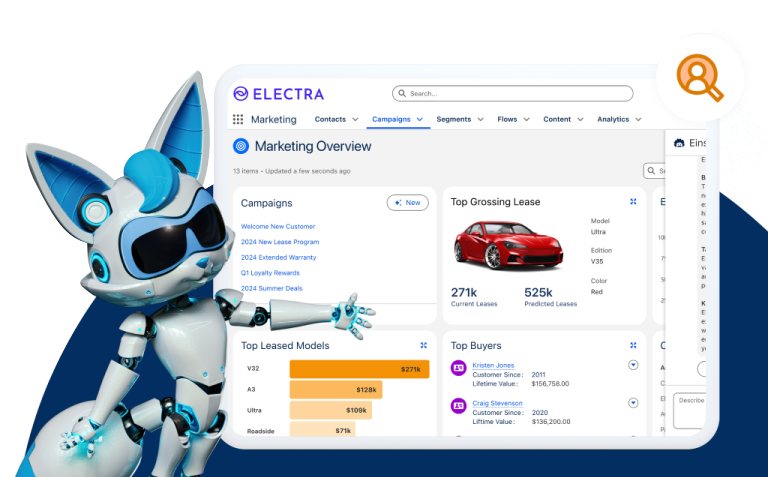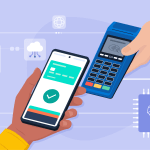When was the last time a brand caught your attention—was it a clever Instagram reel, a billboard on your commute, or a recommendation from someone you trust? However it happened, that moment was marketing in action.
Great marketing doesn’t just sell—it builds connections, earns trust, and ensures customers coming back for more. It’s the engine behind brand loyalty, product launches, and business growth. And in a landscape that’s constantly shifting—from traditional print ads to AI-powered personalisation—understanding the different types of marketing is more essential than ever.
In this article, we’ll explore the full spectrum of marketing—from timeless strategies that still work, to emerging digital tactics reshaping the game. Whether you’re a founder, a marketer, or just curious, this guide will help you navigate what works, why it matters, and how to put it into action.
What is marketing?
Marketing is essentially how businesses create brand value and communicate it to their audience. The ultimate goal of marketing is to build lasting relationships with customers by aligning what a brand offers and what the customers want. It covers everything, from understanding customer pain points to delivering the right message at the right time through the most effective channels.
Unlike a common misconception, marketing is not selling, it does not directly sell to the customer. Instead, it ensures that your customers remember to buy from you when they make the purchase decision. Instead of pushing people through a sales funnel, marketing answers queries, solves problems, and offers educational insights to build trust.
Marketing’s biggest trends await
Explore the latest trends, benchmarks, and strategies from over 6,000 global marketers



Two types of marketing approaches
Broadly speaking, most marketing strategies fall into one of the two categories, depending on the target audience: Business-to-Business (B2B) or Business-to-Consumer (B2C).
B2B marketing: Building trust and value for businesses
The goal of B2B marketing is to connect businesses with each other. Mainly deployed in formal settings, the focus here is on logic, efficiency, and return on investment. Buyers are often decision-makers who are evaluating long-term partnerships, so messaging needs to be clear, data-backed, and tailored to business needs.
B2B strategies commonly include:
- Case studies and whitepapers
- Email campaigns and webinars
- LinkedIn and professional network advertising
- CRM and marketing automation tools
Because the sales cycle is often longer, B2B marketing relies on consistent engagement and content that builds trust over time.
B2C Marketing: Driving emotion and engagement
In B2C marketing, brands speak directly to individual paying customers. As a result, it is more emotionally driven, faster-paced, and built for scale. The goal here is to capture attention quickly and turn that interest into action, i.e., purchase.
Popular B2C tactics include:
- Social media and influencer marketing
- Seasonal campaigns and promotions
- Storytelling through video and interactive content
- Personalised email and SMS campaigns
Where B2B marketing focuses on logic, B2C leans into experience. The messaging is designed to resonate with everyday moments and personal motivations.
Tabulated difference between B2B and B2C Marketing
| Aspect | B2B Marketing | B2C Marketing |
| Audience | Businesses and decision-makers | Individual consumers |
| Messaging | Rational, value-focused | Emotional, benefit-driven |
| Sales Cycle | Longer, more complex | Shorter, impulse-driven |
| Channels | LinkedIn, email, and content marketing | Social media, paid ads, SMS/email |
| Content Style | Educational, detailed | Visual, relatable |
Now that we’ve unpacked how B2B and B2C marketing differ, let’s look at the tried-and-tested methods both often rely on—traditional marketing.
The 10 most common types of traditional marketing
Before the rise of digital tools, traditional marketing shaped how brands were discovered, remembered, and trusted. Even today, these types of marketing strategies are seen daily – on streets, in conversations, and across mailboxes. Here’s how the most common forms of traditional marketing continue to deliver value, especially when used alongside digital strategies.
1. Outbound marketing
While the goal of marketing is to get your message across to customers, outbound marketing proactively initiates contact instead of waiting for them to seek out the business. You see it every day: an ad in the morning paper, a billboard during your commute, or a brand’s jingle during a cricket match. Outbound marketing sends a message to the masses, often in moments when they’re most attentive.
For brands looking to build awareness quickly, this approach still works, especially in sectors like FMCG, automotive, and local services where visibility translates directly into recall.
2. Personalised marketing
Unlike mass media ads or generic flyers, personalised traditional marketing uses physical or human touchpoints (store visits, calls, direct mail, in-person events) to deliver tailored experiences based on customer behaviour, preferences, or life context. It could be as simple as a handwritten thank-you note or a birthday postcard from your local store – small actions that quietly build loyalty over time.
In industries like real estate and premium retail, brands often go a step further- arranging personalised tours, hand-delivering samples, or sending printed catalogues with curated selections based on past interactions and location-based preferences.
Personalisation in the digital world works a little differently—think algorithms, dynamic content, and real-time data. Curious how it all comes together?



3. Direct mail
Direct mail is one of the oldest and most enduring forms of traditional marketing. It involves sending physical promotional materials—like postcards, brochures, catalogs, or letters—directly to a customer’s mailbox. While digital channels offer speed, direct mail stands out for its tangible, personal touch. When well-designed and targeted, it can cut through digital noise, evoke stronger recall, and drive meaningful engagement—especially when combined with thoughtful personalisation or timely offers.
For example, a local salon might send a discount postcard to customers who haven’t visited in three months—reminding them it’s time to book their next appointment.
4. Partner marketing
When two brands come together for a shared marketing campaign, they combine audiences and build trust through association. Think of a telecom provider bundling subscriptions to a streaming service, or a retail brand co-hosting a local event with a digital wallet company. Partnerships also show up through co-branded leaflets, joint offers at physical stores, or event sponsorships, often reaching audiences that digital outreach alone might miss.
5. Telemarketing
Yes, telemarketing still has a place – when done right. The point is to move ahead from cold calls with canned scripts that take a spray-and-pray approach, to warm, data-backed conversations. The idea is to shift from generic pitches to helping customers make informed choices.
Sales teams using platforms like Salesforce Sales Cloud rely on structured call cadences enriched by CRM insights, leading to more relevant, consultative discussions that help customers make better decisions. That means smarter conversations that open doors, rather than slam them shut.
6. Public relations (PR) marketing
When a brand makes news, such as a new product launch, a leadership change, or a social impact initiative, PR ensures the story reaches the right audience. Examples include print media coverage, interviews in trade journals, and expert opinions featured in business supplements – designed to lend credibility and extend a brand’s presence beyond digital channels.
7. Word of mouth marketing
Nothing builds credibility like recommendations from another paying customer. A friend sharing a positive customer service experience, a colleague praising a platform vendor after a smooth implementation – these organic endorsements carry more weight than paid promotions. Also called referral marketing, this is often amplified through real-world touchpoints: a standout store interaction, thoughtful packaging, or helpful service reps that went out of their way to assist a customer
8. Stealth marketing
Not all marketing needs to announce itself. Stealth marketing works by embedding your brand in environments where it naturally fits. Think product mentions in interviews, subtle sponsorships, or immersive brand activations.
Startups at trade expos often lean into this—using branded demo booths or ambient signage that quietly register in the minds of prospects
Startups showcasing solutions during industry expos often adopt this approach- using branded demo booths or ambient signage that plants seeds of familiarity in the minds of key decision-makers without overtly selling.
9. Brand marketing
Strong brands aren’t built overnight. Billboards, print ads, uniforms, signage – every physical presence of a brand contributes to how it’s perceived. Brand marketing focuses on shaping that perception with consistency and emotional resonance.
Consider Raymond’s ‘The Complete Man’ campaign. Through years of print ads, television commercials, and in-store experiences, the brand didn’t just sell fabric, it sold an idea of refined masculinity rooted in care, empathy, and confidence. That narrative, reinforced again and again through traditional media, became the cornerstone of Raymond’s identity.
10. Cause marketing
People back brands that reflect their values. When a brand supports a cause, not as a PR stunt but as a core part of its identity, it forges deeper bonds with its customers.
We often see this in television ads. Tata Tea’s “Jaago Re” campaign began as an awareness drive around voting rights and eventually evolved into a larger platform for civic consciousness and social responsibility. When done with sincerity, cause marketing leaves a mark that lasts well beyond the campaign.
Learn How to Build Campaigns from the Ground Up
Plan, create, and launch impactful marketing campaigns using Salesforce tools.



7 popular forms of digital marketing
Digital marketing tackles a problem that traditional marketing often fails to solve- precision. With data-driven tools and audience insights, marketers can reach the right people at the right moment, on the platforms they’re already engaging with.
Here’s a breakdown of the most popular forms of digital marketing that brands use to convert prospects into leads.
1. Inbound marketing
Inbound flips the old script. Instead of chasing leads, it attracts them through valuable content that solves real problems.
For example, a small business offering cloud services might publish a free guide on choosing the right CRM for growth-stage startups, helping buyers make informed decisions while subtly positioning their own solution. That piece becomes a lead magnet for search traffic, and more importantly, for trust.
2. Search engine marketing
Google alone processes around 8.5 billion searches daily. Every second, someone is searching for something, and search engine marketing (SEM) ensures your brand is visible when intent is highest. Whether it’s a paid search ad for “best accounting software” or a shopping campaign for niche electronics, SEM uses search engine optimisation to put your brand at the top—literally—when buyers are actively looking.
Rank higher on search engines
Your guide to finding the right keywords that drive real results



3. Content marketing
Randomly publishing blogs will not yield the desired results. A well-crafted content marketing strategy helps you build a content repository – a body of knowledge that educates and engages customers.
Content marketing aims to build trust over time. Think explainers, whitepapers, video tutorials, or podcasts tailored to your audience’s context. Whatever the format, it should position your brand as an ally, and not just a seller.
4. Affiliate marketing
Some of the best brand advocates are not your direct employees but people who believe in what you offer. Affiliate marketing turns those advocates- creators, bloggers, and influencers- into partners, letting them earn commissions on conversions when they share your product. It works best when there’s deep trust between the affiliate and their audience, with conversations driven by credibility and established trust.
5. Social media marketing
Social media is the modern public square, and more and more brands are recognising this. Whether it’s a fashion brand using Instagram to launch a new collection or a business sharing their latest wins on LinkedIn, social media marketing helps brands consistently show up on customer feeds, building familiarity that eventually turns to trust.
6. Email marketing
Inboxes are intimate. When done respectfully, email marketing delivers quiet, high-conversion moments.
A re-engagement campaign for dormant users. A personalised offer based on previous purchases. A helpful nudge the day before a subscription renews. Email marketing campaigns that respect the customer’s time (and follow certain best practices) are highly effective. The ninth edition of Salesforce State of Marketing report found that 90% of marketers use email marketing to engage their customers.
With tools like Salesforce’s Journey Builder, emails can be automated at scale without losing the human touch.
7. Mobile marketing
With phones becoming the default screen for several people, mobile marketing taps into this with hyper-relevant, on-the-go messaging. From geo-targeted offers to app push notifications and mobile-optimised landing pages, every interaction is designed for instant attention. WhatsApp updates or SMS-based alerts also keep your brand top-of-mind without being intrusive.
Rank higher on Mobile messaging is taking the lead
engines
81% of marketers say mobile messaging will be a bigger priority this year guide to finding the right keywords that drive real results
Source: Salesforce State of Marketing report



Plan and execute marketing tactics with work management tools

Knowing the types of marketing is one thing. Executing it consistently across teams, timelines, and tactics is another. That’s where work management tools step in.
These platforms help marketers plan, prioritise, and track progress across initiatives- all in one place. Teams gain crucial insights into successful tactics, bottlenecked projects, and areas that might need additional resources. No more scattered to-do lists, missed deadlines, or siloed spreadsheets.
That’s where Salesforce Marketing Cloud stands out. It brings your entire marketing ecosystem together with powerful tools for automation, audience segmentation, journey mapping, and performance tracking — all in one place. Whether you’re running multi-channel campaigns or optimising content calendars, it helps teams stay aligned, efficient, and focused on what matters: impact.
FAQs: Types of Marketing
The two main types of marketing are B2B marketing (Business-to-Business) and B2C marketing (Business-to-Consumer).
- B2B marketing involves selling products or services to other businesses. It typically includes longer decision-making cycles and emphasises ROI and logic.
- B2C marketing targets individual consumers. It focuses on emotional engagement, faster sales cycles, and personal connection with the brand.
The 7 Ps of marketing are a strategic framework used to build and evaluate marketing plans. They are:
- Product – What you offer to the customer
- Price – What the customer pays
- Place – Where the product is sold or accessed
- Promotion – How the product is advertised and communicated
- People – Everyone involved in the delivery process
- Process – How the service or product is delivered
- Physical Evidence – Tangible proof of the offering, like packaging or reviews
The four key customer markets in marketing are:
- Consumer markets – Individuals buying for personal use
- Business markets – Organisations buying to operate or resell
- Global markets – International customers across regions
- Government and institutional markets – Public sector and nonprofit buyers
























